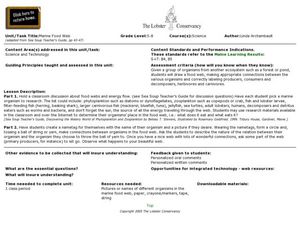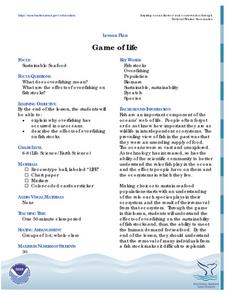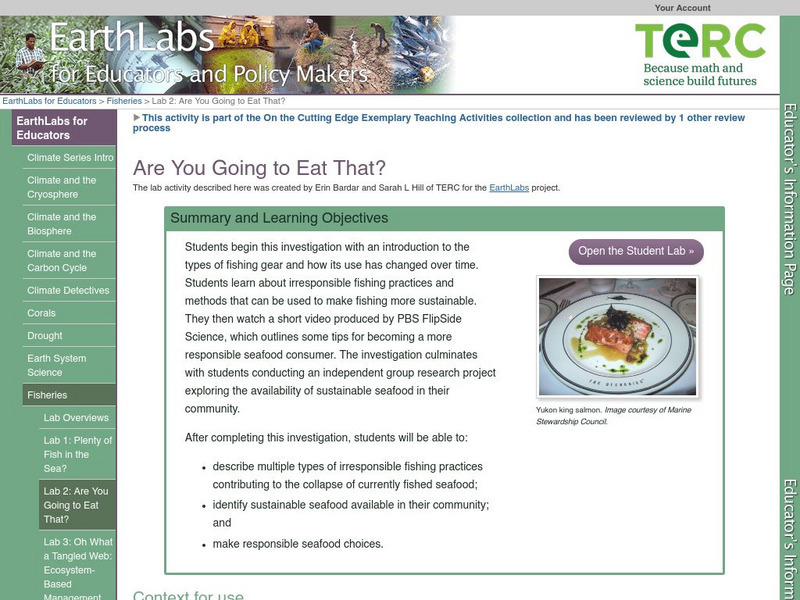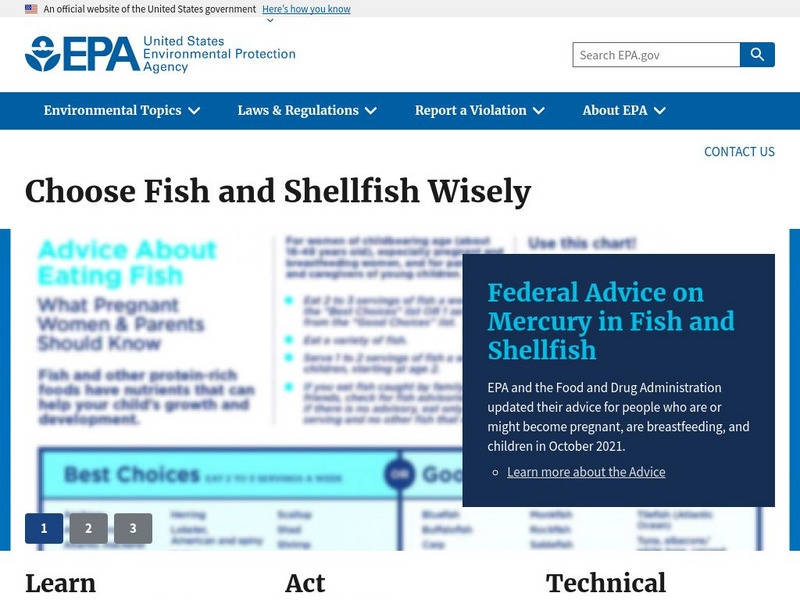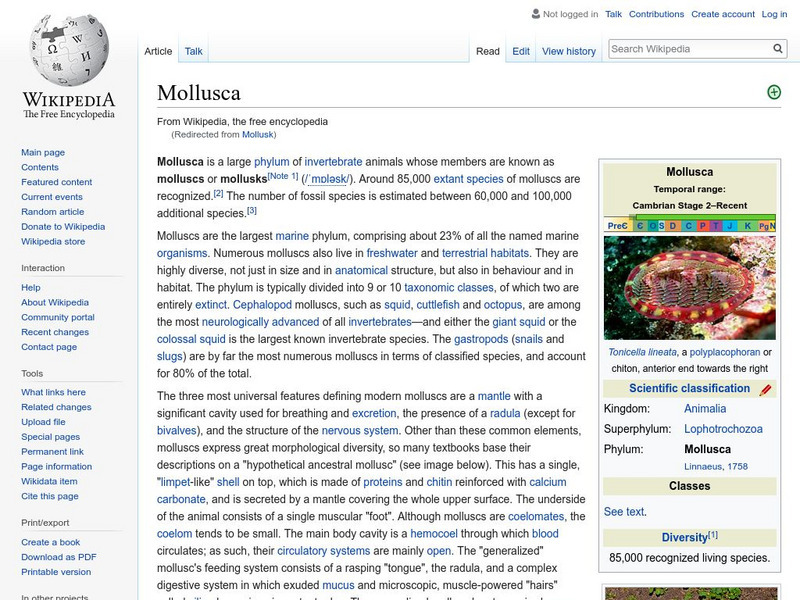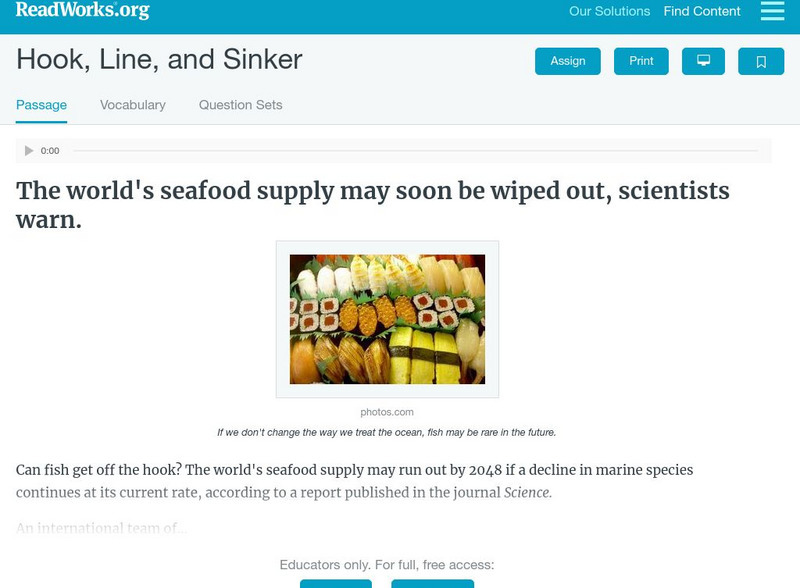National Geographic
Spot Where You DON'T Get Your Seafood
When your class is examining the fishing industry or sustainable practices, you can use this brief activity to demonstrate the global impact our food choices have. Overharvesting, overfishing, and bycatch are important topics to address...
Curated OER
Raw Seafood ~ On the Half Shell
The topic is fascinating, but there is not much for learners to do here. Food borne illness has always been a problem for humans to face, and here, data from the Center for Disease Control is analyzed. Learners look at the number of...
Curated OER
Something's Fishy. . . Classes and Qualities of Fish and Seafood
If you are going to eat seafood, it helps to understand the different classifications. In this presentation, viewers learn to differentiate two types of finfish and the variations of edible shellfish. They also examine the...
Curated OER
Empty Oceans
In groups of four, pupils brainstorm about seafood. They view the Monterey Bay Aquarium Seafood Watch website to examine the problems caused by the seafood industry. Learners are then brought back together to discuss what they...
Curated OER
Marine Food Web
Students investigate the effects of the food chain on all animals by creating a food web. For this seafood lesson, students discuss energy flow and research a specific marine organism of their choice. Students create a food...
Curated OER
Game of Life
By playing this game, students discover what happens to a fish stock when large amounts disappear.
Curated OER
Clam Hooping
Students explore ocean biology by capturing organisms on a beach. In this clam collecting lesson, students identify the clam species and discuss the anatomy of a clam as well as the importance they provide as a meal. Students utilize a...
Curated OER
Crawdad Grab
Learners explore biology by conducting a freshwater fishing activity. In this crawdad lesson, students discuss what a crawdad is, where they are found and how they can be prepared as a meal. Learners utilize string, alligator clips,...
Curated OER
What Foods Contain Products from the Ocean
Fifth graders learn about foods from the ocean. In this ocean products lesson, 5th graders brainstorm what foods come from the ocean, fill in a Venn Diagram comparing alginates, carrageenans and beta carotenes. Students make...
Science Education Resource Center at Carleton College
Serc: Lab 2: Are You Going to Eat That?
A lab experiment in a series of experiments that investigate fisheries. During this experiment, students learn about the destruction of the world's fisheries due to obliteration and wasteful fishing practices. Students will also research...
US Environmental Protection Agency
Epa: Choose Fish and Shellfish Wisely
Information on what you need to be aware of when eating fish, how to protect oneself, what the Environmental Protection Agency is doing to safeguard consumers, and research that has been done in this field of study.
Wikimedia
Wikipedia: Mollusk
Wikipedia offers detailed information on mollusks, a large and diverse phylum including shelled sea animals and the octupus.
Read Works
Read Works: Hook, Line, and Sinker
[Free Registration/Login Required] This passage is a stand-alone curricular piece that reinforces essential reading skills and strategies and establishes scaffolding for vocabulary learning. It can be used as both a read-aloud exercise...
Other
Monterey Bay Aquarium: Seafood Watch Program
This resource is devoted to determining the types of seafood that you should and should not purchase, how fish are farmed and caught and what you can do to improve the awareness of sustainable methods of fish farming. Be sure to click on...






